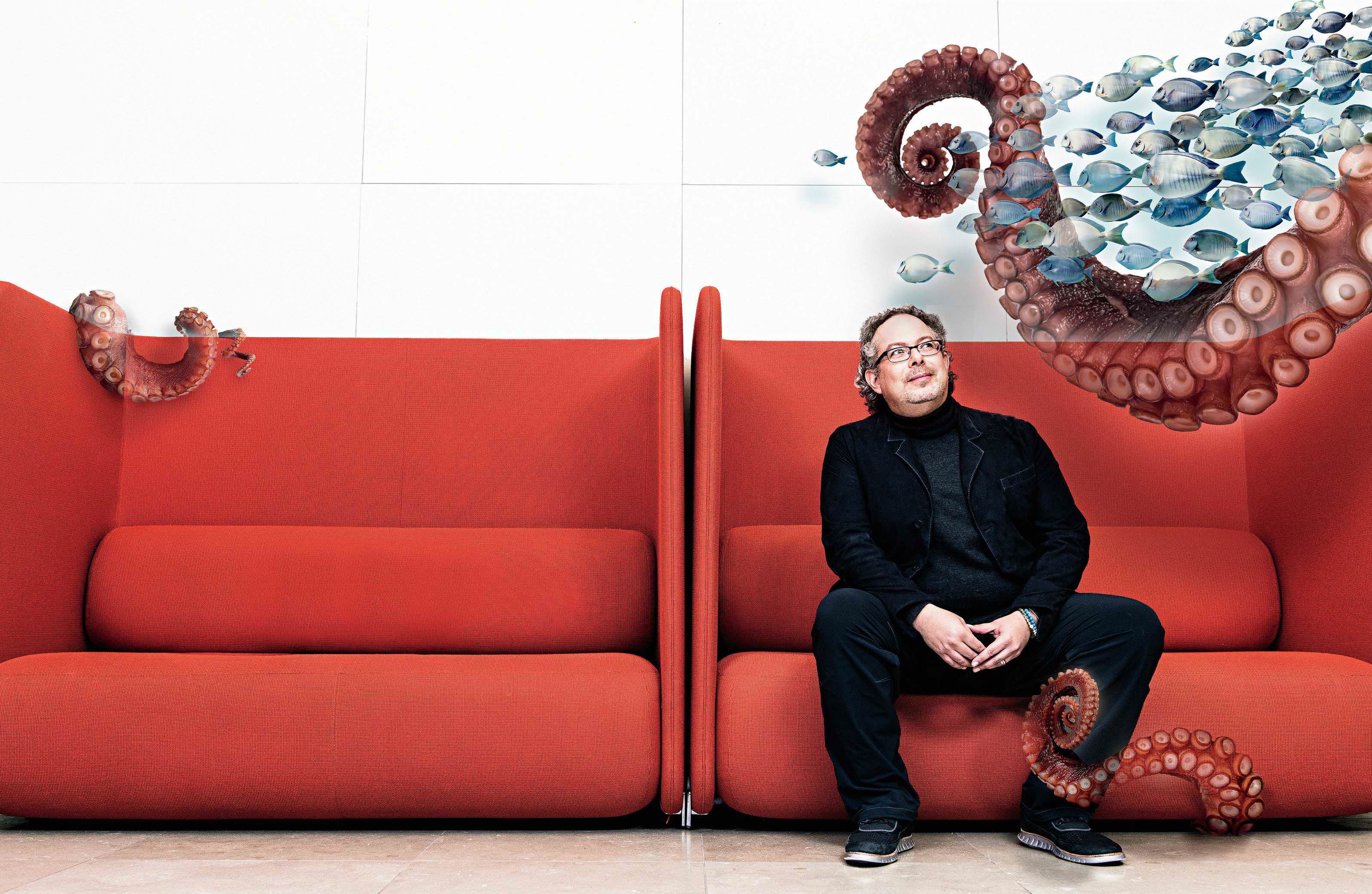Top-secret startup Magic Leap has raised a record-breaking amount of money in pursuit of a radical concept: blending the digital and the physical. “Mixed reality” will transform the way we work, play, shop and see—and entire industries will be changed forever.

The hottest ticket in tech is an invitation to a banal South Florida business park, indistinguishable on the outside from countless other office buildings that dot America’s suburban landscape. Inside, it’s a whole different story. A different reality, in fact. Humanoid robots walk down the halls, and green reptilian monsters hang out in the lounge. Cartoon fairies turn the lights on and off. War machines, 75 feet tall, patrol the parking lot.
Even the office equipment does the impossible. The high-definition television hanging on the wall seems perfectly normal. Until it vanishes. A moment later it reappears in the middle of the room. Incredibly, it is now levitating in midair. Get as close as you’d like, check it out from different angles. It’s 80 inches diagonal, tuned to ESPN—and there is nothing holding it up.
The TV looks real, but it is not. All these wonders are illusions, conjured into being through the lenses of a “mixed reality” headset—the arcane invention of the startup called Magic Leap.
Like any good magician, founder and CEO Rony Abovitz, 45, keeps his cards close to his chest. Magic Leap has operated in extreme secrecy since it was founded in 2011. Only a few people got to see its technology, even fewer knew how it worked, and all of them were buried under so many nondisclosure agreements that they could barely admit the company existed.
This story is from the November 29,2016 edition of Forbes.
Start your 7-day Magzter GOLD free trial to access thousands of curated premium stories, and 8,500+ magazines and newspapers.
Already a subscriber ? Sign In
This story is from the November 29,2016 edition of Forbes.
Start your 7-day Magzter GOLD free trial to access thousands of curated premium stories, and 8,500+ magazines and newspapers.
Already a subscriber? Sign In